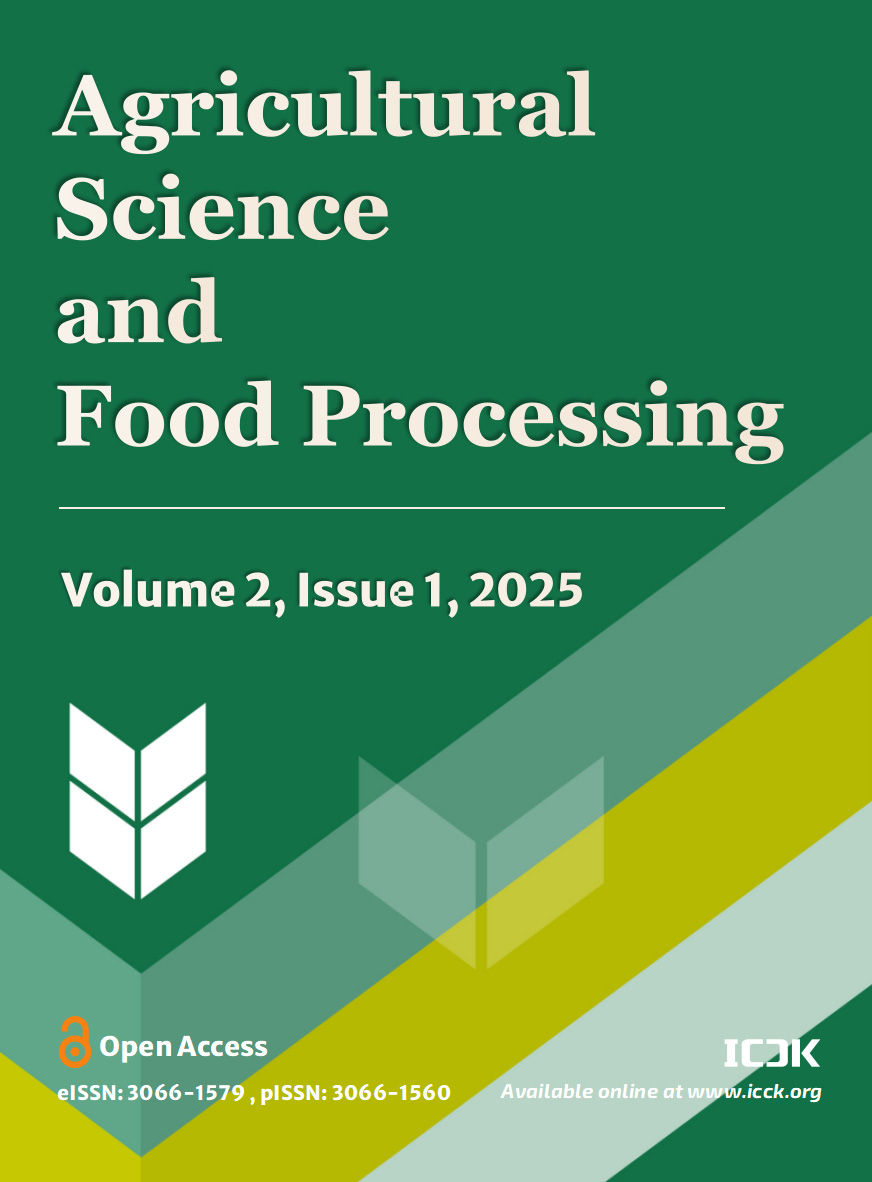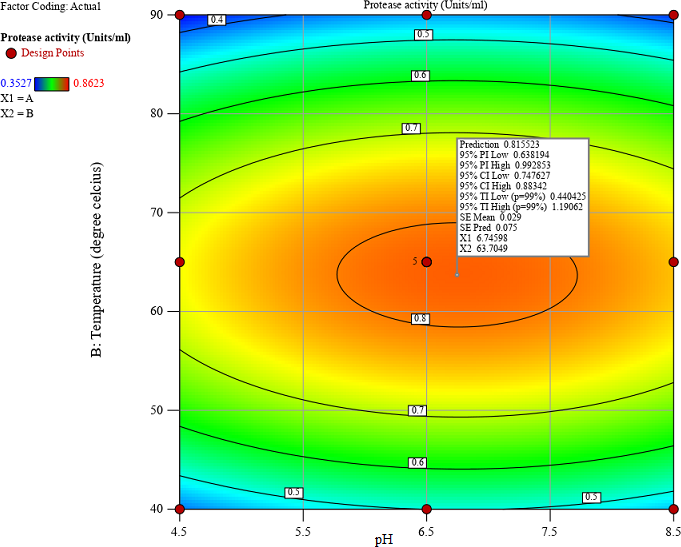Abstract
This study investigates the impact of three precipitation methods—ammonium sulfate (40%), acetone, and acetone with trichloroacetic acid (TCA)—on the yield and activity of protease extracted from Averrhoa carambola (starfruit) at different maturity stages (unripe, semi-ripe, and ripe). Response surface methodology (RSM) was used to optimize hydrolysis conditions, focusing on temperature and pH. Proteases were incubated in buffers ranging from pH 3.5 to 8.5 and at temperatures between 40°C and 90°C, and their proteolytic activity was assessed. Storage stability was monitored over 7 days at <4°C. Ammonium sulfate (40%) yielded the highest proteolytic activity (PA), especially at the unripe stage (0.34 units). In contrast, acetone with TCA gave the highest specific activity (up to 2.38 U/mg at the ripe stage), indicating more efficient enzymes despite lower total ield. Acetone precipitation showed intermediate results. Optimal activity (0.862 units/mL) was achieved at 65°C and pH 6.5. A significant decline in activity occurred during storage at <4°C. These results highlight the need to balance total activity and enzyme efficiency when selecting extraction methods. Overall, ammonium sulfate is most effective for higher yield at the unripe stage, while acetone with TCA excels in specific activity for efficiency-driven applications.
Data Availability Statement
Data will be made available on request.
Funding
This work was supported without any funding.
Conflicts of Interest
The authors declare no conflicts of interest.
Ethical Approval and Consent to Participate
Not applicable.
Cite This Article
APA Style
Adhikari, N., Paudel, R., & Maskey, B. (2025). Effects of Precipitation Methods on Protease Yield and Proteolytic Activities of Protease Enzyme from Different Maturity Stages of Starfruit (Averrhoa Carambola). Agricultural Science and Food Processing, 2(1), 56–67. https://doi.org/10.62762/ASFP.2025.993704
Publisher's Note
ICCK stays neutral with regard to jurisdictional claims in published maps and institutional affiliations.
Rights and permissions

Copyright © 2025 by the Author(s). Published by Institute of Central Computation and Knowledge. This article is an open access article distributed under the terms and conditions of the Creative Commons Attribution (CC BY) license (
https://creativecommons.org/licenses/by/4.0/), which permits use, sharing, adaptation, distribution and reproduction in any medium or format, as long as you give appropriate credit to the original author(s) and the source, provide a link to the Creative Commons licence, and indicate if changes were made.


 Submit Manuscript
Edit a Special Issue
Submit Manuscript
Edit a Special Issue

 Copyright © 2025 by the Author(s). Published by Institute of Central Computation and Knowledge. This article is an open access article distributed under the terms and conditions of the Creative Commons Attribution (CC BY) license (https://creativecommons.org/licenses/by/4.0/), which permits use, sharing, adaptation, distribution and reproduction in any medium or format, as long as you give appropriate credit to the original author(s) and the source, provide a link to the Creative Commons licence, and indicate if changes were made.
Copyright © 2025 by the Author(s). Published by Institute of Central Computation and Knowledge. This article is an open access article distributed under the terms and conditions of the Creative Commons Attribution (CC BY) license (https://creativecommons.org/licenses/by/4.0/), which permits use, sharing, adaptation, distribution and reproduction in any medium or format, as long as you give appropriate credit to the original author(s) and the source, provide a link to the Creative Commons licence, and indicate if changes were made. 